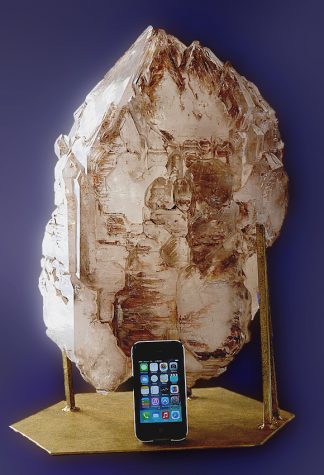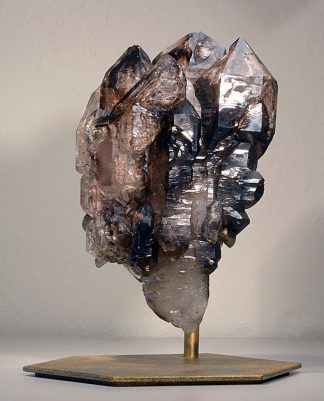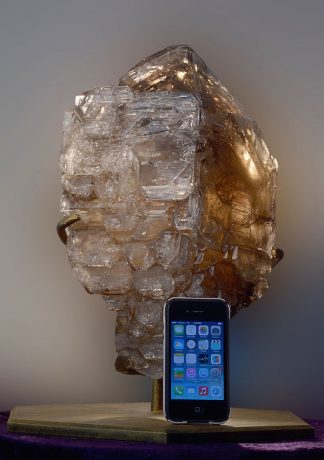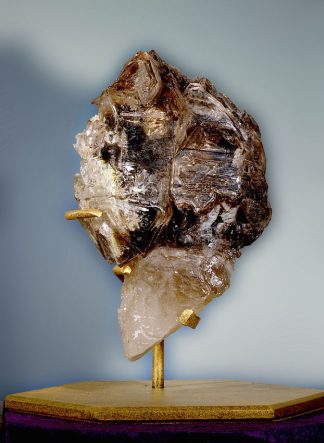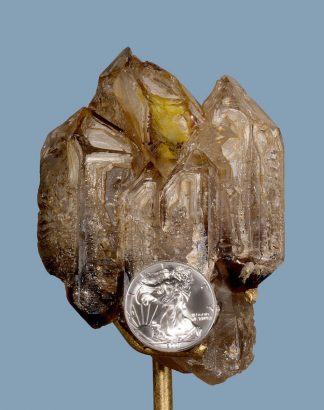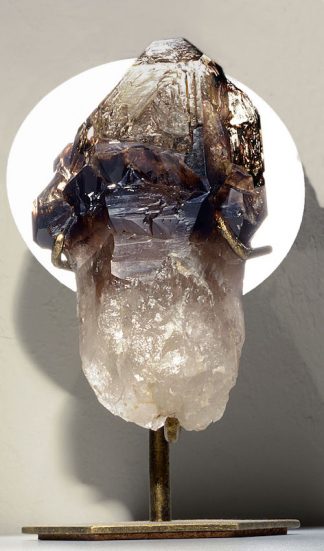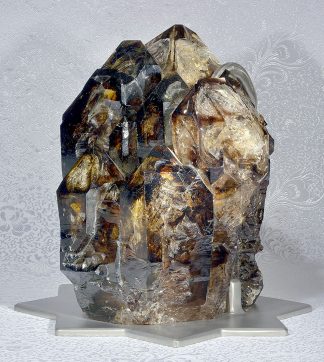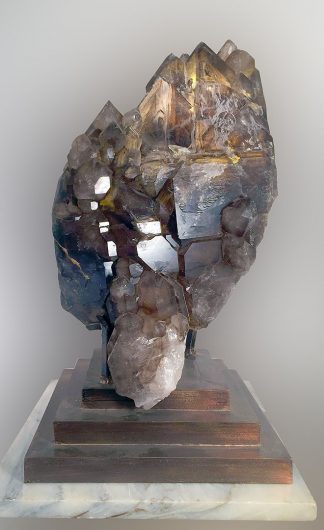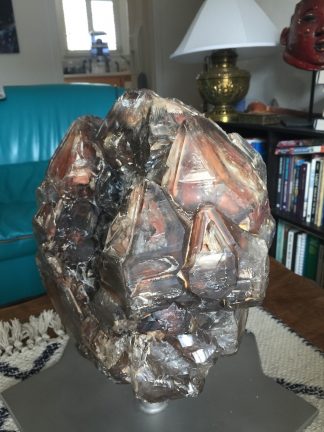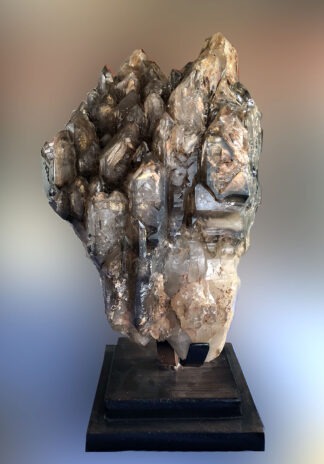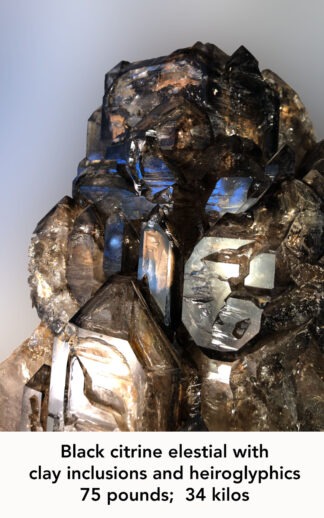While elestials are found in many countries, Brazil seems to have the greatest quantities. Elestial crystals are usually smoky in color (tan, brown, black) but they can also be clear, citrine, amethyst, or a combination of different colors arranged in layers or zones. They are characterized by many inclusions of clay, sand, water and gas bubbles. Light-colored clays, distributed in layers inside the quartz, give elestial crystals a “skeletal” or bone-like look. Crystals with air and gases trapped as floating bubbles in water pockets are called “enhydros.” Elestials are associated with the qualities of rapid transformation in spiritual growth, brought about by one's intention to create changes in one's life.
Elestials are defined by two main characteristics:
1. Many inclusions of non-quartz material in repeating layers, caused by rapid growth
2. Surface patterns that are disrupted by tiny inclusions, creating wavy shapes and unusual geometries that may look like angular art-forms or hieroglyphics (ancient Egyptian writing).
We can also define elestials by what they are NOT. There are five other crystal patterns that are confused with elestials, namely:
1. Twinned crystals: See the section on Crystal Castles.
2. Crystals with missing pieces: Striations are left where other crystals fell off, sometimes called Key Crystals or Crystal Keys.
3. Crystals with breakage: called Warrior crystals, with concentric curved breaks.
4. Re-healed crystals: crystals that broke in the ground and started growing again.
5. Etched or acid-etched crystals: patterns formed by dissolving the quartz due to ground-based acid chemicals.
1. Twin crystals (twinned quartz, Dauphine twins, parallel twins).
These are 2 crystals that occupy the same space with inter-penetrating atomic structures. While they may look like a group of double-ended crystals stuck together, it is really one crystal that has split into many, all lined up in parallel. The double-ended crystals may have elestial patterns on their surface, but not always. More usually they have straight lines from side to side (striations) that show the typical growth of regular quartz.
2. Missing crystals (indented crystals; negative space crystals; key crystals)
Occasionally, crystals will separate from their neighbors due to earthquakes, or weak connections. The remaining patterns often look like a series of tiny lines in parallel (striations) or may take on more complicated geometries from where the crystals grew next to each other. Look for an indented area on your crystal, where another one might have fit in. Sometimes you can see a six-sided hole where a crystal tip fell out and went missing.
3. Breakage (broken or shattered crystals; warrior crystals)
Quartz can break in two basic patterns. Occasionally, a crystal will split along a flat plane, like diamonds do. This is called planar cleavage. More often, quartz breaks in curvy, spiral patterns called conchoidal cleavage (named after the spiraling conch shell.) It is pronounced as “con KOY dull.” The curving breaks can look like elestial waves. Usually there are very sharp edges that tip us off to the breakage. (Do not cut yourself on them!) Elestial patterns tend to be more angular and geometric, with tiny facets showing.
4. Re-heals (re-healed crystals; self-healed crystals).
Sometimes crystals broke, millions of years ago while their neighbors were still growing in the ground. Typical causes of breakage are from earthquake shocks or ground movement; gravity pulling off a large piece of crystal; or crystals growing into one another in a confined space with enough force to shatter. Whatever the cause of breaking, if the crystal, pocket, cavity (vug) or cave was still in a growth stage, new crystallization may form over the broken surface. This may wind up looking like elestials. To distinguish it, on the re-healed surface, look for many tiny triangles all lined up in rows. Usually the broken surface will have different angles or contours from quartz' typical hexagonal (six-sided) flat surfaces. Early re-heals generally have a frosty look, while more advanced ones are very shiny. If the re-healing goes far enough, it may glue the broken pieces back together; or create a large flat surface (with a cloudy layer underneath it); or show up as a little forest of small parallel crystals that look like a mountain range or city.
5. Acid etching (Etched crystals)
Quartz is generally not affected by any chemicals in the area. It is extremely sturdy and chemical resistant. Sometimes, the quartz surface will be eaten away due to chemical changes during its growth, caused by exposure to strong ground acids at high temperatures. Many delicate patterns may result. Look for tiny canyons with shiny pieces of crystal sticking up in the air, generally just a few millimeters apart. It resembles a small jigsaw puzzle.
